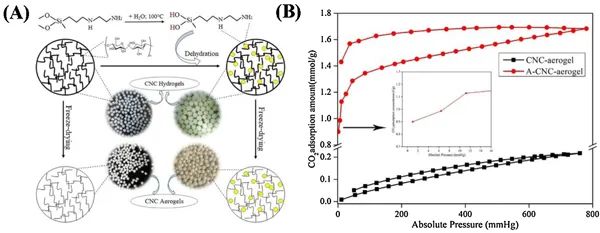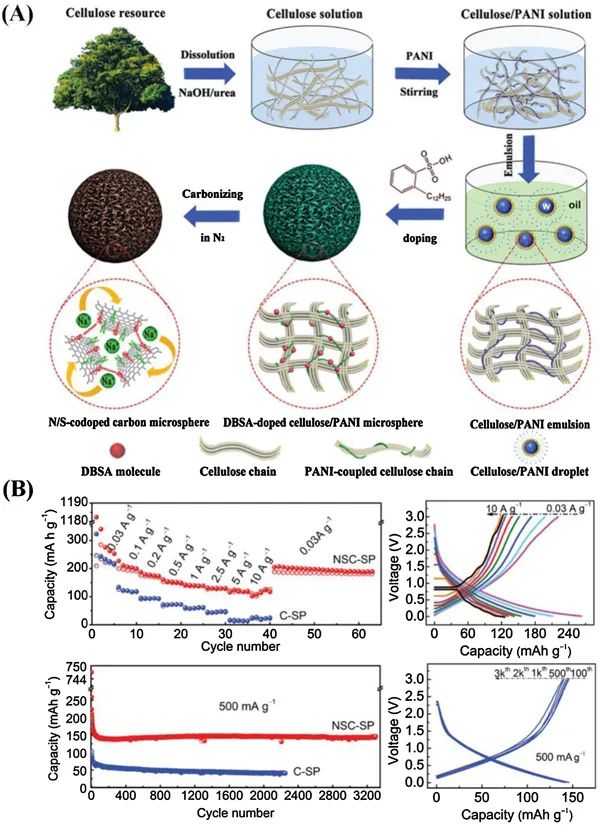
hotline:
17715390137
Tel/Wechat:
18101240246 (Technology)
0512-68565571
Email:mxenes@163.com (Sales Engineer)bkxc.bonnie@gmail.com
Scan the code to follow or search the official account on WeChat:
2D Materials Fronrier After paying attention,
click on the lower right corner to contact us,
Enter enterprise WeChat.
Professional Services Online

introduction】
Cellulose porous material (CPM) combines the advantages of cellulose and porous materials. Generally speaking, the low density, high specific surface area, easy chemical modification, and interconnected porous structure of cellulose porous materials facilitate the loading and release of molecular guests. These characteristics endow porous cellulose materials with important technical significance in energy storage and conversion, catalyst supports, adsorption, separation, and biological materials. Due to the diversity of structures and functions, easy availability and reproducibility, functional cellulose porous materials have attracted great attention in recent years.
【Introduction to Achievements】
Recently, under the leadership of Professor Xiaofeng Sui of Donghua University and Professor G. Julius Vancso (co-corresponding author) of the University of Twente in the Netherlands, the team has been actively exploring the various applications of CPM. The team reported on the design, preparation, characterization and application of these materials in oil-water separation, heavy metal adsorption, heat insulation, catalyst carriers, electromagnetic interference shielding, thermoelectric materials, antibacterial materials, and wound healing. Here, we will focus on the latest developments in the three main application areas of environment, energy and health. It also discussed the current challenges that hinder the application of functional CPM, possible solutions, and future prospects. After introducing the importance of CPM, first a brief overview of its preparation is given. Subsequently, they focused on their environmental applications, including pollutant adsorption, oil-water separation, as an environmentally friendly catalyst carrier, electromagnetic shielding, and carbon dioxide capture. Then the applications of supercapacitors, ion batteries and thermal insulation materials in energy are reviewed. Non-toxicity is the key to biological materials and the inherent advantage of cellulose. Therefore, it is also considered for medical care, such as wound dressings, cell culture scaffolds, drug delivery and pressure sensors. The result was published on Prog. Poly. Sci. with the title "Multifaceted applications of cellulosic porous materials in environment, energy, and health".
【Picture Guide】
Figure 1 Typical morphology observed in microporous materials

Figure 2 Preparation of hydrophobic CPM from hydrophobic organosilane

Figure 3 Preparation process and performance characterization of cellulose sponge with double-layer structure

Figure 4 Synthetic schematic diagram of PAMAM-g-CNFs

Figure 5 Schematic diagram of MOF-cellulose hybrid aerogel

Figure 6 3D wood-derived carbon modified with Ni nanoparticles as a catalyst

Figure 7 Schematic diagram of the preparation process of cellulose-based air filter

Figure 8 Polydopamine/silver modified cellulose composite sponge as EMI shielding material

Figure 9 CNC aerogel with high concentration of amine functional groups

Figure 10 Capacitor nanomaterials mixed with cellulose aerogel structure

Figure 11 Preparation and performance of ion implantation battery

Figure 12 Mechanical properties and flame resistance characterization of cellulose-based hybrid nanomaterials

Figure 13 Schematic diagram of the mechanism of cellulose-GPTMS-chitosan (CGC) sponge

Figure 14 Preparation and performance characterization of NCG/PPy composite aerogel

Figure 15 Preparation and performance characterization of CNF aerogel

【summary】
Cellulose is rich in resources, environmentally friendly and biodegradable. This proves to a certain extent that people’s interest in CPM is growing rapidly, pushing this type of material to the forefront of biopolymer research and related technological transformation. However, the complex preparation process to obtain functional CPM poses challenges for mass applications. Although the mechanical properties of bio-based microporous cellulose are high enough in some cases, it still cannot match the performance of its synthetic commercial similar materials. The environmental application of CPM has obvious advantages, but compared with the synthesis platform of the same function, due to the higher cost, it is still not fully utilized. They are also a very good choice in high-performance energy applications such as energy storage, batteries, and heat insulation, and the cost disadvantage is not serious. CPM has been extensively studied in the field of in vitro biomaterials, but due to its limited biodegradability, research on CPM used in vivo has been hindered. New methods of chemical modification or physical hybridization have brought new opportunities for the development of unique functional CPM biomaterials. At present, the most effective methods for preparing CPM are freeze drying and supercritical fluid drying. Due to method limitations, CPM of this route cannot be prepared on a large scale, which limits its current use and hinders the development of technology. In order to achieve large-scale utilization, it is necessary to work hard to establish a normal temperature and normal pressure drying method. This field is developing rapidly, and as the demand for bio-based materials and environmentally friendly technologies continues to grow, the field will continue to develop in the coming decades.
Literature link: Multifaceted applications of cellulosic porous materials in environment, energy, and health (Prog.Poly. Sci., 2020, DOI:10.1016/j.progpolymsci.2020.101253)
This information originates from the Internet for academic exchange only. If there is any infringement, please contact us to delete it immediately

| Reminder: Beijing Beike New Material Technology Co., Ltd. supplies products only for scientific research, not for humans |
| All rights reserved © 2019 beijing beike new material Technology Co., Ltd 京ICP备16054715-2号 |